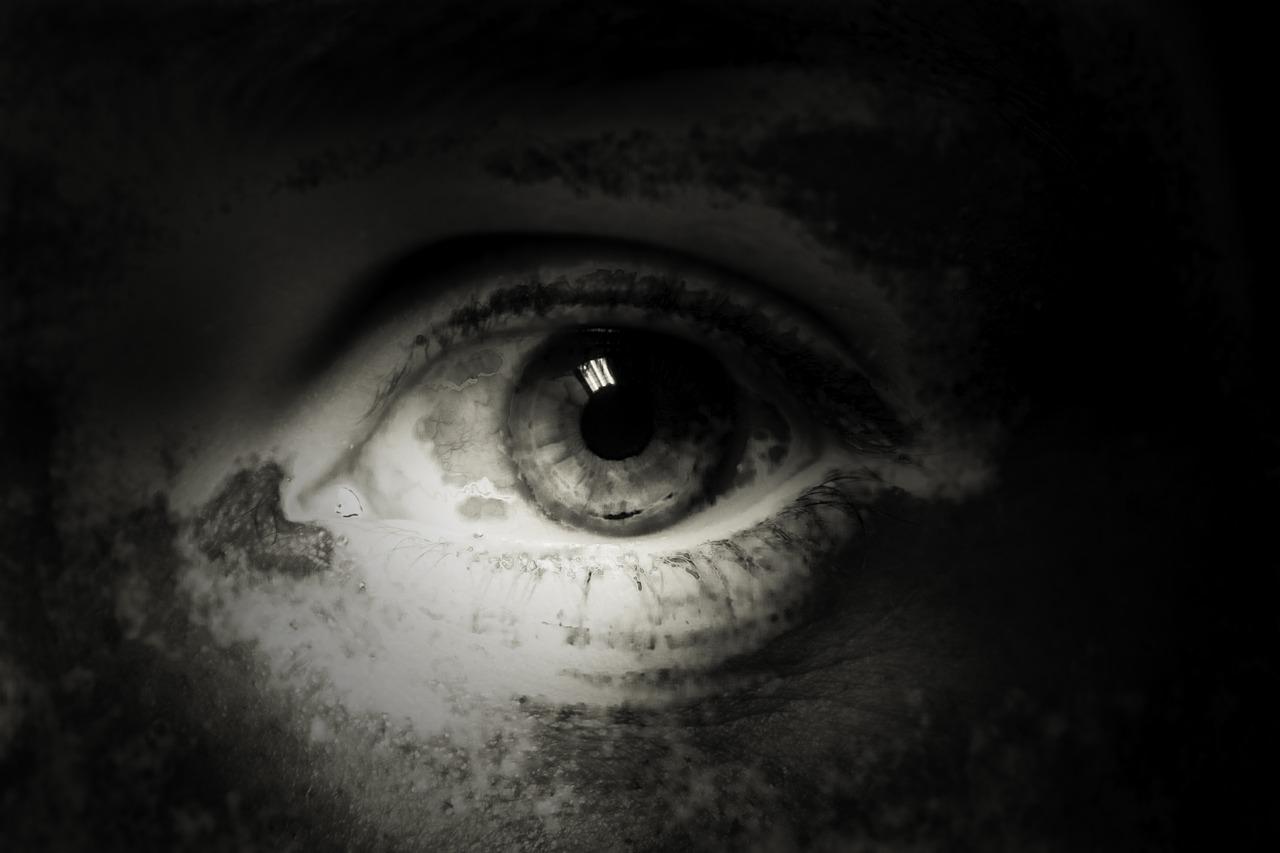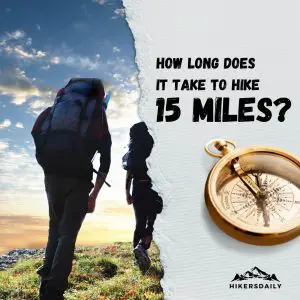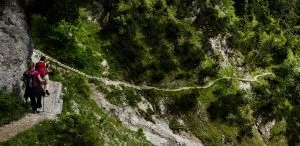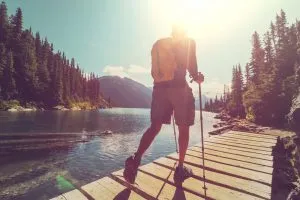Do Feral People Live In National Parks? (2023)

Have you ever wondered if there are any feral people living in our national parks? I have to admit – I thought about it when I was young. After all, it would make sense for an impressionable young child who watches a lot of television, right? There’s plenty of wilderness to hide away in and ample opportunity to forage for food, and these documentaries are damn convincing. But is it really true? Do feral people live in national parks? Or is this just another urban legend now perpetuated by social media? Let’s explore the possibility and find out once and for all!
Quick Links
Where Do the Stories of Feral People in National Parks Originate From?
The stories of feral people living in national parks can be traced back to several different sources.
Firstly, cannibals have been a popular topic of conversation for centuries, and there are always new stories emerging about them. But as you and I both know, as traditions pass down through time, sometimes things get lost in translation, or embellished to make them more exciting. Feral people who are cannibals, living in the wild, could very well be one of those things.
Secondly, there are countless stories and legends about hermits who have chosen to live in the wilderness, away from society. These stories often originate from religious texts, such as The Lives of the Desert Fathers, a collection of biographies about Egyptian monks who went into the desert to live a life of solitude. While there are many documented cases of hermits living in the wild, it’s important to remember that these stories are often embellished and exaggerated.
It’s also worth noting that some isolated tribes around the world still have very little contact with the outside world, so stories about them can be easily confused with stories of feral people living in national parks. Some of these tribes in the Amazon have been known for cannibalism, which could add fuel to the fire.

And quite possibly, one of the most famous & legitimate cases of a feral person was Dina Sanichar, who was one of the inspirations for The Jungle Book. Dina Sanichar was literally raised by wolves in India’s Uttar Pradesh jungle. He spent the first few years of his life learning how to think and act like a wolf. It wasn’t until he was six years old that hunters found him and brought him to an orphanage.
Feral People Claims on Social Media
And most recently, on TikTok, several videos have been posted by people claiming to have spotted feral people living in national parks. These videos don’t show any footage of feral people – they are just confident claims of stories with nothing to back them up. Check this one video out:
@heyjaybae96 #stitch with @wes.tm it might be illogical but I can’t stop #FindYourCore #SourPatchPrankFund #fyp ♬ Blade Runner 2049 – Synthwave Goose
In this video, a user by the name of @heyjaybae96 claims that there are, for sure, feral people living in National Parks. She says, “In 2021, there are feral people that are cannibals living in our national parks. ” She also adds that she will probably never go to a national park for the rest of her life because she is “absolutely terrified of being eaten by a feral person.”
Nearly 1 million likes, but no evidence to support the claim. This is how conspiracies start, people!
What are “Feral” people?
There is no official definition of what a “feral” person is, but the general consensus seems to be that they are people who have been living in the wild for so long that they have lost all contact with civilization. They may or may not have any contact with other people and may or may not be hostile to outsiders. The term is often used interchangeably with “wild man” or “wild woman.”
Others claim they are cannibals with an insatiable hunger for human flesh and thirst for human blood. This is where the stories of feral people in national parks get really creepy.
Do Feral People Actually Exist?
There have been numerous stories and legends about feral people living in national parks, but no concrete evidence supports these claims. There is no hard evidence that feral people are living in national parks. There have been no confirmed sightings, and no one has come forward with any concrete proof. The stories that do circulate are mostly based on legend or hearsay, and nowadays, for internet notoriety.
The reality is that Native Americans used to live in what is now our national parks. And while there are still some tribes living in certain national parks today, they are not feral. They have homes, families, and jobs. They are not living off the land or avoiding all contact with the outside world.
There are also numerous homeless people living in public parks. While they may live off the land and avoid contact with the outside world, they are also not feral. They are still humans who have chosen (or been forced) to live in this way.
Explaining The Disappearances In National Parks
Some sources claim over 1,000 missing person cases in our national parks, but this number is highly exaggerated and completely FALSE. In reality, there are only a handful of cases that remain unsolved.
One of those sources is David Paulides, the North America Bigfoot Search founder. He claims that there are roughly 1,600 people who go missing under “mysterious circumstances” in the wild somewhere in the United States. That’s where this big number comes from and has spread like wildlife over the internet.
Who Is David Paulides?
Besides being the founder of North America Bigfoot Search, which is an organization that looks for evidence of the existence of Bigfoot, David Paulides is also a writer and former law enforcement officer. He has written several books about missing people in national parks, including Missing 411: Hunters.
His book details the disappearance of hundreds of hunters in national parks across North America. He argues that these disappearances cannot be explained by natural causes and that there is foul play involved. He also claims that the government is hiding something and is not forthcoming with information about these cases.
While Paulides presents some compelling arguments, he has also been accused of cherry-picking data to fit his narrative and fabricating stories. In addition, he was let go from the police department for soliciting a fake charity. Take that for what you will.
The Reality of National Park Disappearances
The majority of the disappearances can eventually be explained by simple explanations like getting lost, falling off a cliff, or drowning. People go into national parks intending to hike or camp for a few days, but sometimes they get lost or injured and are unable to make their way back to safety.
In other cases, people go into national parks with the intention of disappearing. They may be running from the law, or they may be trying to start over. In either case, they are not feral people living off the land; they are just people who don’t want to be found.
Here are some actual park statistics that may put your mind at ease (or disappoint you if you were hoping the feral people story has some merit to it):
- There are an estimated 1,000 deaths per year in the parks, but these can all be attributed to a cause such as drowning, falls, vehicle accidents, or medical conditions.
- The leading cause of death in national parks is due to drowning.
- There are those who unfortunately go to national parks with the intention of committing suicide, and this accounts for nearly 30% of all park deaths.
- Homicide also accounts for a small percentage of park deaths, but these are usually isolated incidents involving two known parties.
A More Recent Example
Take a look at the recent case of Gabby Petito, who went missing in 2021 after traveling with her boyfriend (at the time) in Grand Teton National Park.
It turns out it was an extremely sad case of domestic violence, and her boyfriend killed her before fleeing the country.
My point is that many of these disappearances go very short-lived without conclusive evidence. There eventually is a resolution, even if it’s not the one you were hoping for.
So while there may be a few cases of missing people in national parks that remain unsolved, this is more likely due to foul play or intention rather than a feral person stalking them through the woods.
Documentaries About Feral People
I’m sorry if I burst your conspiracy theorist bubble, but if you’re still interested in the feral people legend, then you might enjoy these documentaries:
Missing 411: The Hunted
From the founder of Big Foot Search North America, this documentary looks at cases of hunters who have inexplicably gone missing in wildlands over the years.
You can watch it on Amazon Prime here.
Missing 411
Another documentary from David Paulides, this one looks at five cases of missing children in national parks across multiple decades.
You can watch it on Amazon Prime as well.
Secret of The Wild Child
This documentary chronicles the life of Genie Wiley, a child who was raised in complete isolation and never learned to speak. She didn’t grow up in the wild but was kept in such squalor that she might as well have been.
BBC owns the rights to this one, so you can watch through their network
Are Feral People Living In National Parks In 2023?
No, they are most likely not.
Final Thoughts
While it makes for a good story by the campfire, the truth is that there probably aren’t any feral people living in the national parks of the United States.
Think about it like this; UFOs are another mystery that has captured the public’s attention for years. But just because we can’t explain everything doesn’t mean that aliens are visiting us from other planets. But if there were thousands of mysterious disappearances following a big light beaming down to bedrooms and taking people in the middle of the night, then you bet your bottom dollar that it would gain widespread attention and be considered a very real phenomenon.
The same goes for the people who go missing in national parks. If there were truly dozens or even hundreds of cases of feral people living in the woods and abducting or murdering innocent campers, then you can bet your bottom dollar that we would have heard about it by now.
But that’s not what we’re dealing with here. So please, don’t worry too much about feral people living in the woods and stalking you on your next camping trip. Just be sure to follow the usual safety precautions, and you’ll be just fine.






